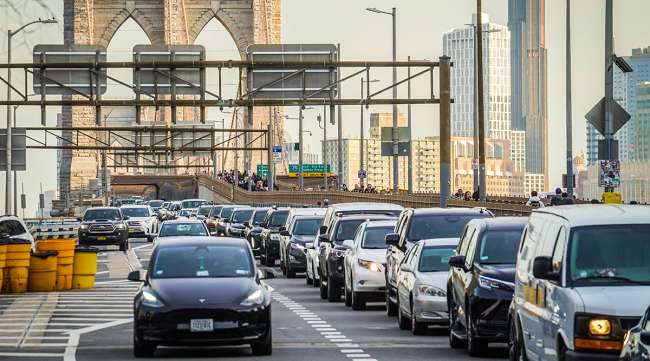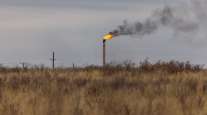Senior Reporter
EPA Tweaks Emissions Rules Proposed for Cars, Light Trucks

[Stay on top of transportation news: Get TTNews in your inbox.]
The Biden administration on March 20 announced new emissions standards for automobiles and light- and medium-duty pickup trucks that regulators said will over time significantly reduce planet-warming emissions from passenger vehicles.
The program establishes new, more stringent vehicle emissions standards criteria for pollutants and greenhouse gas emissions from motor vehicles for model years 2027 through 2032 and beyond.
The new standards, which become effective in 60 days, do not pertain to heavy trucks. However, the standard’s medium-duty vehicle category includes Class 2b and 3 vehicles with a gross vehicle weight rating of between 8,501 and 14,000 pounds. The medium-duty category primarily includes large pickups and vans typically used for work due to their higher towing and hauling capabilities compared to light-duty vehicles.
The Environmental Protection Agency said the new standards will build on its existing emissions standards for passenger cars and light trucks for model years 2023 through 2026.

Environmental Protection Agency Administrator Michael Regan. (Nathan Howard/Associated Press)
“The standards continue the technology-neutral and performance-based design of previous EPA standards for cars, pickups and vans, and leverage advances in clean car technologies to further reduce both climate pollution and smog- and soot-forming emissions,” EPA said. “EPA is finalizing the same standard proposed for MY 2032 while allowing additional time for the auto sector to scale up clean vehicle manufacturing supply chains in the first three years covered by the rule.”
The new standards come as sales of electric vehicles, which are needed to meet the standards, have begun to slow, according to published reports. The auto industry cited lower sales growth in objecting to EPA’s preferred standards unveiled last April as part of its ambitious plan to cut planet-warming emissions from passenger vehicles, the Associated Press said.
The EPA said under its final rule, the industry could meet the limits if 56% of new vehicle sales are electric by 2032, along with at least 13% plug-in hybrids or other partially electric cars, as well as more efficient gasoline-powered cars that get more miles to the gallon.
EPA’s final car standards are a win for the environmental and public health! They will slash greenhouse gas and other harmful air pollution #emissions from passenger cars and trucks.https://t.co/8GcePEcd6m pic.twitter.com/ZpKo1xfLT9 — U.S. EPA (@EPA) March 20, 2024
EPA said compared to the existing model year 2026 standards, the final MY 2032 standards represent a nearly 50% reduction in projected fleet average GHG emissions levels for light-duty vehicles and 44% reductions for medium-duty vehicles. Also, the standards are expected to reduce emissions of health-harming fine particulate matter from gasoline-powered vehicles by more than 95%.
This will improve air quality nationwide and especially for people who live near major roadways and have environmental justice concerns, EPA said.
.@EPA’s vehicle pollution standards will:
🚗tackle climate pollution
🚗improve air quality for communities across the country
🚗save drivers money
🚗expand consumer choice in clean vehicleshttps://t.co/1OMLOFH4di — Michael Regan, U.S. EPA (@EPAMichaelRegan) March 20, 2024
“With transportation as the largest source of U.S. climate emissions, these strongest-ever pollution standards for cars solidify America’s leadership in building a clean transportation future and creating good-paying American jobs, all while advancing President [Joe] Biden’s historic climate agenda,” EPA Administrator Michael Regan said. “The standards will slash over 7 billion tons of climate pollution, improve air quality in overburdened communities and give drivers more clean vehicle choices while saving them money. Under President Biden’s leadership, this administration is pairing strong standards with historic investments to revitalize domestic manufacturing, strengthen domestic supply chains and create good-paying jobs.”
Want more news? Listen to today's daily briefing below or go here for more info:




